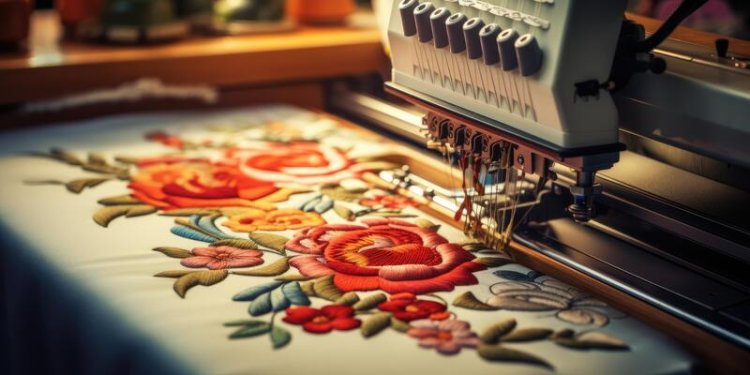Seamless Stitching: The Magic of Digitizing Embroidery Designs
Discover the transformative art of digitizing embroidery designs. Learn how seamless stitching bridges creativity and technology to deliver stunning embroidered masterpieces.

Introduction
Embroidery is a timeless art that has graced fabrics for centuries. From handcrafted heirlooms to modern-day branding, embroidery has an unmatched charm. However, the process has evolved dramatically with the introduction of technology, particularly through digitizing embroidery designs. This innovative technique has revolutionized the craft, making it more precise, efficient, and accessible.
In this article, we’ll explore the magic of digitizing embroidery designs and how it transforms creative visions into seamless stitching on fabric. Whether you’re a beginner or a seasoned embroiderer, understanding this process opens doors to endless possibilities.
What Is Digitizing Embroidery Designs?
Digitizing embroidery designs is the process of converting a digital image, such as a logo or artwork, into a file format readable by embroidery machines. Unlike simple image files like JPEGs or PNGs, embroidery files contain intricate details about stitching, including:
- Stitch Type: Specifies the kind of stitch used, such as satin, fill, or running stitch.
- Density: Determines how closely stitches are placed.
- Direction: Guides the machine on stitch angles for optimal results.
- Sequence: Ensures each part of the design is embroidered in the correct order.
This process transforms flat digital images into tactile works of art, giving life to creative visions.
Why Is Digitizing Essential for Modern Embroidery?
1. Precision and Consistency
With digitization, every detail of the design is carefully mapped out, ensuring consistent results. Whether it’s a single piece or a batch of hundreds, the output remains flawless.
2. Efficiency in Production
Manual embroidery is labor-intensive and time-consuming. Digitizing simplifies the process, allowing embroidery machines to work at high speeds without compromising quality.
3. Creative Flexibility
From intricate patterns to bold logos, digitization enables embroiderers to bring any design to life on a wide range of fabrics and products.
4. Professional Quality
Digitized designs deliver professional results, making them ideal for businesses, branding, and customized gifts.
The Process of Digitizing Embroidery Designs
Step 1: Preparing the Artwork
The first step in digitization is selecting or creating the artwork. Ensure the design is clear and high-quality, as this affects the final embroidery outcome.
Step 2: Choosing Software
Professional digitizing software, such as Wilcom, Hatch, or Brother PE-Design, is essential. These tools allow users to define stitch types, directions, and densities with precision.
Step 3: Mapping the Design
Using the software, the design is broken down into segments, each assigned specific stitch types and directions. This process requires skill and attention to detail to ensure the design translates well onto fabric, ensuring every curve, edge, and detail of the digitized logo is accurately represented. By carefully mapping out the stitching process, the digitized logo achieves precision and clarity, making it stand out on any fabric.
Step 4: Test Stitching
Before final production, a test stitch is performed to check for any errors or adjustments needed. This ensures the design meets expectations.
Step 5: Final Production
Once the design is perfected, it’s ready for mass production or application to the desired fabric.
Tools for Digitizing Embroidery Designs
To achieve seamless stitching, the right tools are crucial. Here are some essentials:
- Digitizing Software: Wilcom, Hatch, Brother PE-Design, and Pulse are popular choices.
- Embroidery Machine: Ensure your machine is compatible with the file format generated.
- Quality Threads and Needles: Using high-quality materials enhances the final result.
- Computer or Tablet: A reliable device to run the digitizing software.
Tips for Seamless Stitching in Embroidery Digitization
1. Understand the Fabric
Different fabrics react differently to embroidery. For instance, lightweight fabrics may require lower stitch density, while thicker materials can handle denser stitching.
2. Optimize Stitch Direction
Proper stitch direction ensures smooth embroidery and prevents puckering or distortion.
3. Use the Right Thread
Select threads that complement the design and fabric. Consider factors like colorfastness and durability.
4. Test Before Production
Always perform a test stitch to identify potential issues and make necessary adjustments.
5. Keep It Simple
Avoid overly complicated designs, especially if you’re a beginner. Focus on clean lines and manageable details.
Common Challenges in Embroidery Digitization
Challenge 1: Fabric Distortion
Solution: Adjust stitch density and direction to suit the fabric type. Use stabilizers to prevent distortion.
Challenge 2: Thread Breakage
Solution: Ensure the thread tension is correct and use high-quality threads compatible with your machine.
Challenge 3: Misalignment
Solution: Double-check the digitized design and perform test stitches to catch errors early.
The Future of Digitizing Embroidery Designs
As technology continues to evolve, embroidery digitization is becoming more sophisticated. Artificial intelligence and automation are expected to further enhance the precision and creativity of designs. Additionally, cloud-based software solutions are making digitization more accessible, allowing designers to work from anywhere.
Conclusion
Seamless stitching truly captures the magic of digitizing embroidery designs. This innovative process bridges the gap between creativity and technology, empowering artists, businesses, and hobbyists to produce stunning embroidered pieces.
Whether you’re customizing apparel, creating personalized gifts, or branding your business, digitize logo for embroidery to unlock endless possibilities. With the right tools, techniques, and a touch of creativity, your designs can come to life with professional-quality precision, ensuring your vision translates perfectly onto fabric.
Are you ready to explore the magic of digitizing embroidery designs? Dive into this transformative art form and watch your creative visions take shape on fabric!
What's Your Reaction?


















